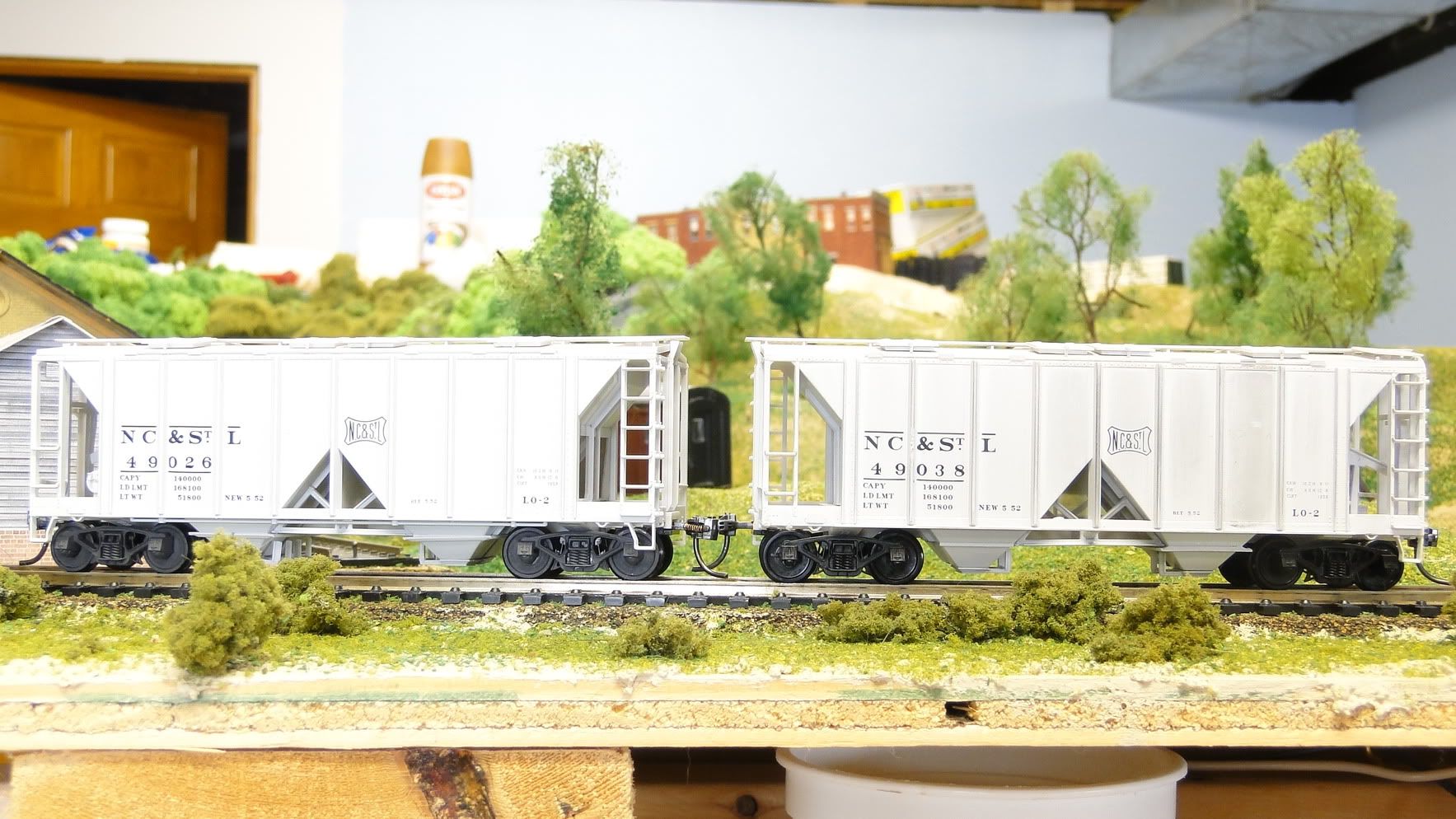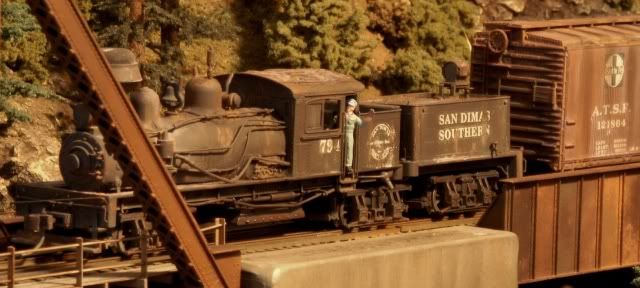– Do you think a layout (and/or trains, buildings, etc-- the individual components) should be weathered, un-weathered, or some of both?
When I look at the real world, nothing stay shiny more than a year. The red window trims I painted last summer are already fading out a little bit… It’s the same for the layout. I like a mix of everything: almost new things, well-maintained but faded things and the ones in decay. In my area, everything around the railway are in bad shape just as if everything was going to bankrupcy. A friend of mine just came back from Tehachapi and Arizona recently. It was quite stunning to see all those neatly ballasted track to the point of looking fake! 
This week, a string of freshly repainted CNLX grain hoppers was clashing with the habitual rusty and grimy ex-government cars. I think it could be a nice idea to have some repainted or new cars among the HO roster to give more variety.
– Do you think they should be weathered before going on the layout, after going on the layout, or just whenever the mood strikes?
When the mood strikes… Weathering is quite an art, so I do it when I feel inspired. But recently, I’ve been upgrading the fleet by weathering most of it.
– Does an un-weathered layout stand out to you at all? Would you notice it if everything was pristine and neat?
It always feels like a toy to me. Brightfully colored cars just look out of place, but that’s my own distorted perception of reality. I have a nostalgic nature, so I prefer when cars, buildings and scenery have a layer of dust to show their history. And sometimes, this layer of dust just doesn’t exist because the car is intended to be brand new. Overdoing weathering is the same as none to me. As someone pointed out, it have to be inspired by reality.
I also agree with the previous example about weathering small details like trucks. Often, a coat of flat finish with painted truck is enough to kill the toyish aspect.
Here’s my humb



